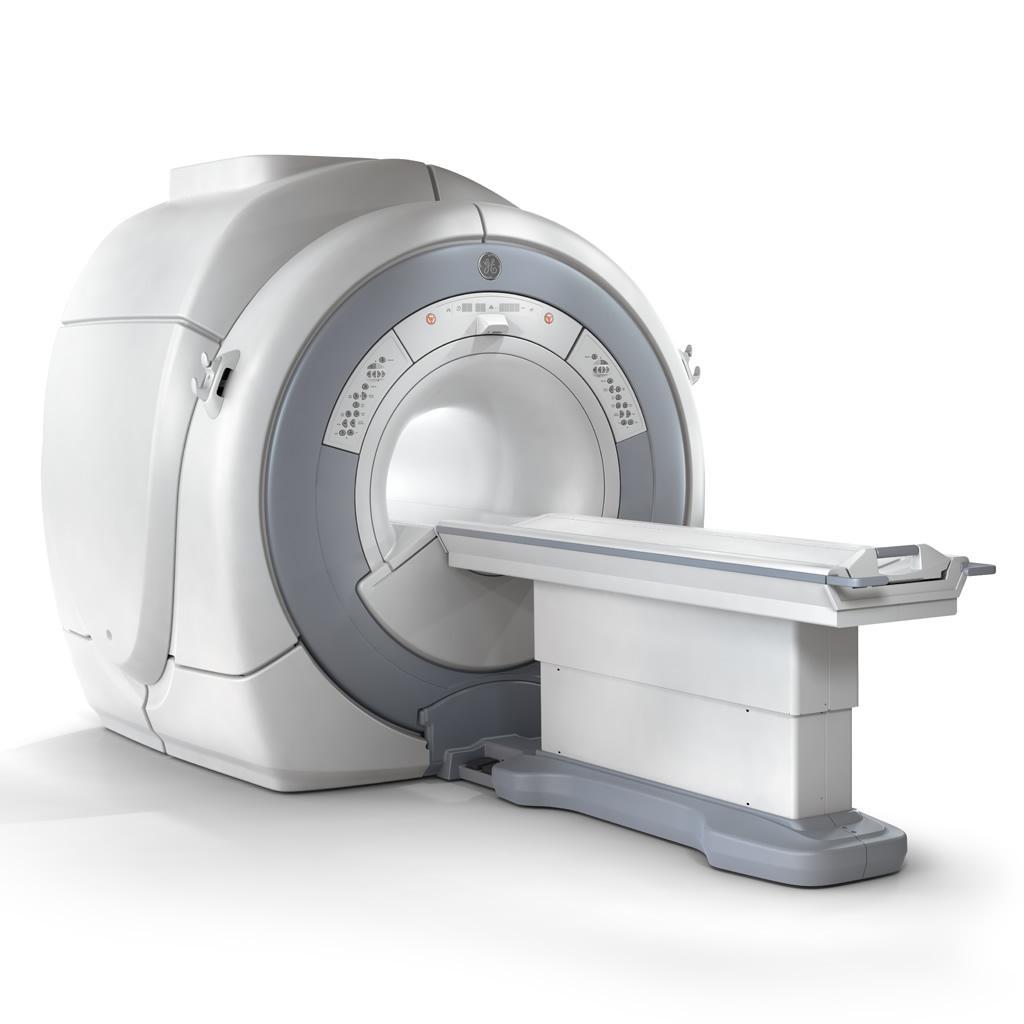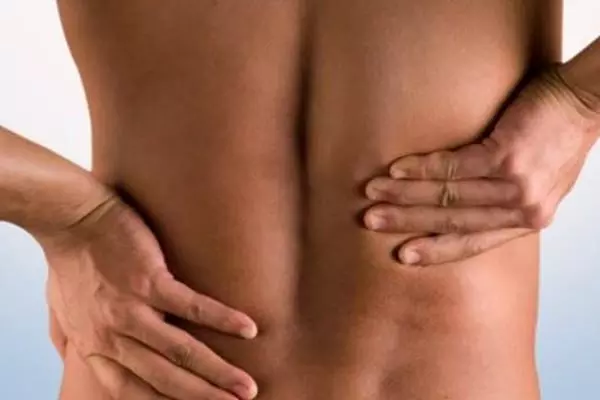Quick overview :
Back pain and its therapy
If you experience back pain, there are a number of possible causes. Back pain is very uncomfortable but harmless in most cases! In the 30-60 age group, around 60-80% suffer from back pain.
A basic distinction is made between "non-specific" back pain - there are no clear physical causes here (muscle tension) - and "specific" back pain - means back pain with clear physical findings (herniated disc, arthrosis, stenosis, etc.). Only about 3-5% of acute back pain is caused by a herniated disc. Degenerative changes in the vertebral bones or intervertebral joints, which then lead to irritation or constriction of parts of the spinal cord ( spinal canal stenosis ) or nerves that leave the spinal cord, lead to back pain. But particularly tense and overworked muscles can cause back pain. The pain can radiate to the legs or shoulders. Drafts or cold can also cause muscle tension and back pain.
Certain rheumatic diseases, injuries and, rarely, tumor diseases can also be associated with back pain.
An exact diagnosis and clarification of the connections are therefore often complicated and require many years of experience on the part of the specialist.
Back pain is not always caused by pathological changes in the intervertebral disc.
Likewise, a herniated disc does not always cause symptoms.
Back pain is usually described as deep-seated pain in the lower section of the spine (back pain, lumbago). Back pain very rarely has a cause in the thoracic spine.
If the pain occurs in the top section of the spine (neck pain), it often originates in the cervical spine.
 Common causes of back pain
Common causes of back pain
- Muscle tension (non-specific back pain)
- Skeletal diseases (e.g. osteoporosis - bone loss)
- Degenerative changes (wear and tear) of the vertebral bodies and intervertebral discs
- Inflammatory diseases such as rheumatism, gout, infections
- Malformations such as scoliosis, spina bifida and kyphosis (M. Bechterew and Scheuermann)
- Injuries such as fractures or dislocations of vertebral bodies
- Diseases of internal organs in the area of the cervical spine (liver, gallbladder, stomach and heart)
- Diseases of internal organs in the area of the thoracic spine (gullet and trachea, vascular diseases, lungs)
- Diseases of internal organs in the area of the lumbar spine (vascular diseases, gynecological and urological diseases)
- Myofascial disorders (muscles adjacent to the spine or associated tendons)
Common complaints
- Severe pain in the lower back that radiates to the buttocks, leg or foot.
Possible aggravation from coughing, sneezing or straining. - Numbness or signs of paralysis in one leg
- Tingling or numbness on the inner thighs and around the anus
Partial loss of control when urinating or defecation.
The symptoms depend primarily on whether and to what extent neighboring nerves are squeezed by a herniated disc. Therefore, not all of the above symptoms have to occur at the same time.
The number one cause of pain - the intervertebral disc
The 23 intervertebral discs are elastic cartilage discs about 5 - 20 mm thick and are located between the vertebral bodies of the spine. They consist of more than 90% water. Its main function is to act as a "shock absorber" to absorb shock and vibration. Furthermore, they serve as placeholders between the individual vertebral bodies and thus create space for the nerves which can emerge on the left and right of the spine. In the center of the intervertebral disc is a gelatinous core (nucleus) surrounded by a solid ring of fibrous cartilage and connective tissue (fibrous ring / annulus). In children and young people up to around the age of 16, the intervertebral discs are supplied with blood up to the outer disc ring (anulus) and are thus supplied with nutrients.
The nutrient supply of the intervertebral disc is the be-all and end-all
Unfortunately, with increasing age, the supply of nutrients to the intervertebral discs also decreases, until it finally comes to an almost complete standstill in adulthood. First, the nutrient supply in the outer area (annulus ring) is almost stopped and later also the inner area (nucleus). In adulthood, the intervertebral discs are only supplied via a diffusion (particle transport) of nutrient particles, which emanates from the adjacent bony end plates of the vertebral bodies, which are very well supplied with blood. The main component of these important nutrients consists of oxygen, glucose and proteins. Important for these diffusion processes is the loading and unloading of the intervertebral discs, which then act like a pump.
For this reason, it is all the more important to ensure that the intervertebral discs are nourished through this "pump function" through sufficient movement. Unfortunately, our modern way of life (a lot of sedentary activities, such as driving to work and then sitting down again in the office, etc.) favors an undersupply of our intervertebral discs with nutrients. In other words, without wanting to, we deprive our intervertebral discs of the nutritional basis. The result: especially in the lower area of the spine (lumbar spine) and above all in the rear area of the intervertebral disc, which is already heavily loaded - these become weak over time and can therefore no longer fully fulfill their shock absorber and pumping function. Natural wear and tear progresses faster and as a result, small tears can occur in the rear area of the intervertebral disc (similar to a porous rubber tire), which initially manifests itself in local back pain, also known as lumbago. In extreme cases, an unfavorable load on the intervertebral disc (e.g. lifting a water box) leads to increased pressure from the core material of the intervertebral disc against the weakened annulus ring, which can burst and the nucleus material can escape ( herniated disc ) and press against the spinal nerves (sciatica).
Without an exact diagnosis, there is no success in therapy
The success of a treatment essentially depends on the correct indication!
Sometimes the cause of the back pain is only partially accessible to surgical treatment; it is also possible that an existing underlying disease or other factors call into question the chances of a cure through an operation. Unfortunately, not only general practitioners but also orthopedic surgeons and neurosurgeons tend all too often to subject the patient to overtreatment without precise knowledge of the diagnosis - i.e. the cause of the pain. In order to decide in individual cases whether and which surgical procedure is really promising, the high level of specialist expertise of the spine specialist is required.
If the clinical picture suggests that no long-term improvement can be achieved even with surgery, it is important that the patient receives comprehensive advice and an individually tailored treatment strategy that goes far beyond the usual administration of injections, painkillers and physiotherapy to alleviate his suffering.
It is important to distinguish between
| Local back pain, i.e. pain that is limited to the back | Pain that starts in the back but radiates to other parts of the body, such as the legs |
Acute back pain
A common cause of acute (radiating) back pain is pathological changes in the intervertebral disc.
Here the spectrum ranges from tears in the fibrous ring to a manifest bulging disc or even a herniated disc.
Chronic back pain
 If back pain lasts longer than 6 weeks, it has become chronic back pain. Every chronification of pain represents a challenge for the doctor. If conservative therapy measures such as physiotherapeutic and physical forms of treatment as well as targeted drug pain therapy do not lead to a significant improvement within 6 to 8 weeks, further differentiated research into the cause is important.
If back pain lasts longer than 6 weeks, it has become chronic back pain. Every chronification of pain represents a challenge for the doctor. If conservative therapy measures such as physiotherapeutic and physical forms of treatment as well as targeted drug pain therapy do not lead to a significant improvement within 6 to 8 weeks, further differentiated research into the cause is important.
These include, above all, a blood test and the use of imaging methods such as X-rays, magnetic resonance imaging (MRI) and/or computed tomography (CT). Since November 2012, the apex spine center has had one of the most modern magnetic resonance tomographs in southern Germany.
If the preliminary examinations have not resulted in a clear diagnosis, a discography of the pathologically altered intervertebral discs in the MRI is indicated. Here it can be determined whether there is a painful tear on the outer ring of the intervertebral disc (anulus). If necessary, the discography is combined with a computed tomography. If discography reveals a disc rupture, a percutaneous nucleotomy may be performed.
In the case of significant intervertebral disc degeneration, which is limited to one or two intervertebral discs, after the discography has been carried out, a decision is made as to whether discus plastic (endoscopic relief and freshening of the intervertebral disc), intervertebral disc prosthesis or spondylodesis is the best solution.
dr Schubert in an interview on the topic of conservative and surgical therapy for back pain

